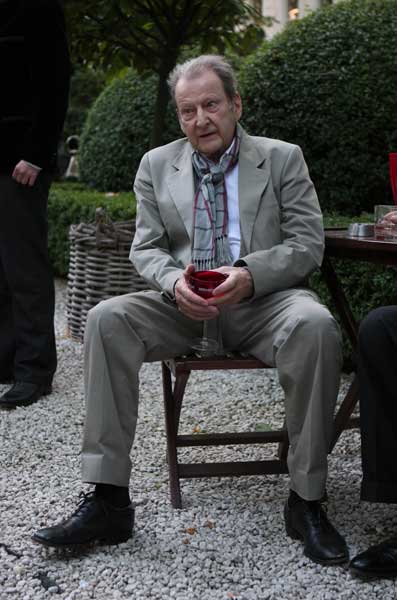Man With A Blue Scarf: On Sitting For A Portrait By Lucian Freud, By Martin Gayford

This is the true story of a man called Martin Gayford, art critic by trade, who sat for a portrait by Lucian Freud seven years ago, told by the man who sat for that portrait over hundreds of hours. It is told in the form of a diary, sitting by sitting, easily, conversationally, insightfully, with a delicate humour, often self-deprecating. The sitter worries about his own ageing, the folds beneath his chin. At one point Freud says: "If it really is like that, well, I'll use it." Gayford remarks that he never did find out what "it" was. Freud, slightly dismayingly for the sitter, relishes such exciting evidence of mortality.
The span of time begins in December 2003 and ends in July 2004. In part, it is the story of a collaboration. No subject can be painted with any conviction by Freud unless there is genuine collaboration. Disengagement simply will not do.
Posing, according to this sitter, is somewhere between engaging in transcendental mediation and visiting the barber's. There is both an element of day-to-day routine, and the serious awareness that each moment of concentrated work – on the part of both sitter and painter- is precious and needs to be worked for.
On both sides there is anxiety: how long will the portrait take? Will it be a success, or will it lie among the abandoned – of which there are plentiful examples. And there are the characteristic anxieties of the painter, manifested in his behaviour. That quick way he has of seeming to dance as he works, to mutter to himself, to move towards the application of a stroke of paint, and then to pull back like a horse rearing at his own looming shadow.
Gayford observes all this. He also observes himself observing, and his own changes of mood. There is much conversation, exchanges of opinions about writers and painters. Freud's likes and dislikes are highly individualised and highly characteristic. His nervous energy is always on display. He works up to ten hours a day, standing up, making those darting motions. He likes to take a bath – sometimes three times a day. Once upon a time he painted sitting down. Not any more. Time, that subtle thief of youth and age, is too precious. After all, he was already into his ninth decade when this painting was being made.
What alarms Gayford at first is that Freud doesn't seem to have a method of painting portraits. He doesn't, for example, do an outline of the face. Freud begins where he begins, with a little dab of detail in the middle. Then, little by little, it widens out, but not in any predictable way. This is what is so fascinating for him to observe, and for us to read: that Freud is making it up as he goes along. The thing is to go against the grain of the predictable, to make it new every time, in the immortal words of Ezra Pound. It's all rather exhausting and enthralling.
Subscribe to Independent Premium to bookmark this article
Want to bookmark your favourite articles and stories to read or reference later? Start your Independent Premium subscription today.

Join our commenting forum
Join thought-provoking conversations, follow other Independent readers and see their replies